Get ready: Gen Z will ask questions about materials sourcing, the environment and human rights.
Originally in Instore Magazine by Eileen McClelland
WHEN JEWELRY DESIGNER Jennifer Dawes first began talking about responsible sourcing in 2005, she didn’t find a receptive audience in industry circles.
“A lot of people were looking at me like I had two heads,” she recalls.
Since then, she’s been encouraged by a burgeoning willingness to discuss environmental and sourcing issues, as well as by tangible progress. “There’s been huge progress, as far as being able to source materials where you know the mining practices and origin stories,” she says.
Iris Van der Veken, executive director of the Responsible Jewelry Council, says preparing for change is the key to future success and even survival. “I strongly believe companies that will not integrate responsible business practices at the heart of their business strategy will be out; it’s just a matter of time,” she says. “When a consumer walks into your store, they have to have confidence in the integrity of the product and the processes behind the creation of that product. There is a movement going on, and this movement will not slow down.”
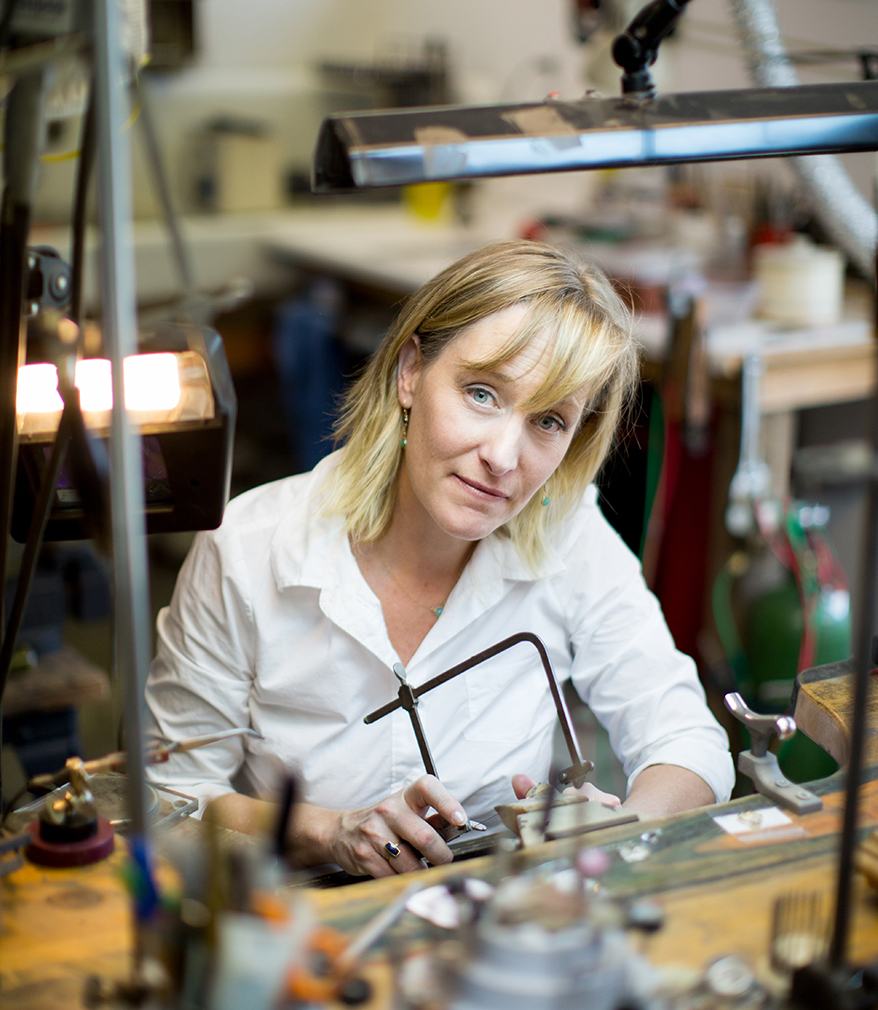
Jewelry designer Jennifer Dawes in her studio.
Dawes, vice president of Ethical Metalsmiths, uses antique diamonds and sources recycled gold through the precious metals division of recycling company Unicor. The gold comes out of landfills, computer chips and boards. She partners with gem dealers she found who are able to share stories about miners along the supply chain. She recommends jewelry retailers and designers cultivate their own curiosity and question their suppliers to determine how deep their commitments to ethical practices are.
Simply asking those questions can spark change, says Wendy Woldenberg, a Seattle designer and retailer, who built her business, WEND Jewelry, on sustainability goals. “Once we ask questions, just by having mentioned it, it stays with people and we all get more thoughtful.”
Asking suppliers where their gold, gems and diamonds come from is a good place to start, says Susan Wheeler, founder of the Responsible Jewelry Transformative. “Larger companies aren’t going to be able to answer that, but they need to be asked,” she says. “Any initiative is good, but what’s most important is that you don’t do harm in your supply chain, even if you are doing good in something else. I understand the hurdles, but it’s the future. It’s the growing sector in the industry.”

Wendy Woldenberg owns WEND Jewelry.
The Responsible Jewelry Transformative encompasses the Chicago Responsible Jewelry Conference, the Marange Women’s Alliance (to fight violence against women in mining communities) and Virtu Gem, which received a grant from the World Bank to help miners sell rough gemstones as well as raise money to give back to mining communities.
“Every year, the Chicago conference gets bigger and bigger and the topics we dive into get deeper and deeper,” Wheeler says. The conference doesn’t hide from any troublesome or ugly topic: deforestation in the Amazon rain forest, sex trafficking in mining communities, the possibility that diamonds could be mined from the sea floor in the future.
ADVERTISEMENT
Wheeler has had ongoing conversations with the U.S. State Department, which is working to address human rights abuses associated with gold mining. She works directly with a mining community in Malawi, Africa, to source gold for her own jewelry. She seeks out fair-mined and conflict-free gold, antique or recycled diamonds and responsibly sourced gemstones.
Wheeler believes customers will begin to ask about environmental and human rights aspects of the industry. But when it comes down to it, in her view, that’s not really the point. “For a long time, responsible sourcing has been pitched as good marketing. But what it really comes down to is: Are you OK with this as a human? With child slavery, with destruction of the Amazon? And if you are not, there are things you can do, especially as a smaller retailer. Supporting small scale miners and giving them a fair price for their gems is the way to benefit all of these miners globally. .”
Dawes says it’s important to have a “come-to-God moment” about how global supply chain issues are relevant in one’s business. “If you ARE serious about it, you’re going to expand your customer base and those customers are going to be your favorite. Because they care about their purchases, their relationships and what’s happening in the world.”
The RJC is working to align their own efforts with the United Nations’ 17 Sustainable Development Goals, adopted by 193 countries in 2015. The RJC’s Van der Veken suggests that when it comes to addressing supply chain issues, retailers identify one or two issues important to their business and commit to meaningful change in those areas. If the retailer works extensively in gold, the focus could be on environmental issues related to whether its suppliers have addressed mercury concerns. If the company works in diamonds or colored stones, it could begin with understanding whether its stones may have come from high-risk areas such as the Central African Republic or Myanmar. In any sector, the company can learn about the Sustainable Development Goals (SDGs) and how it can contribute to the supply chain.
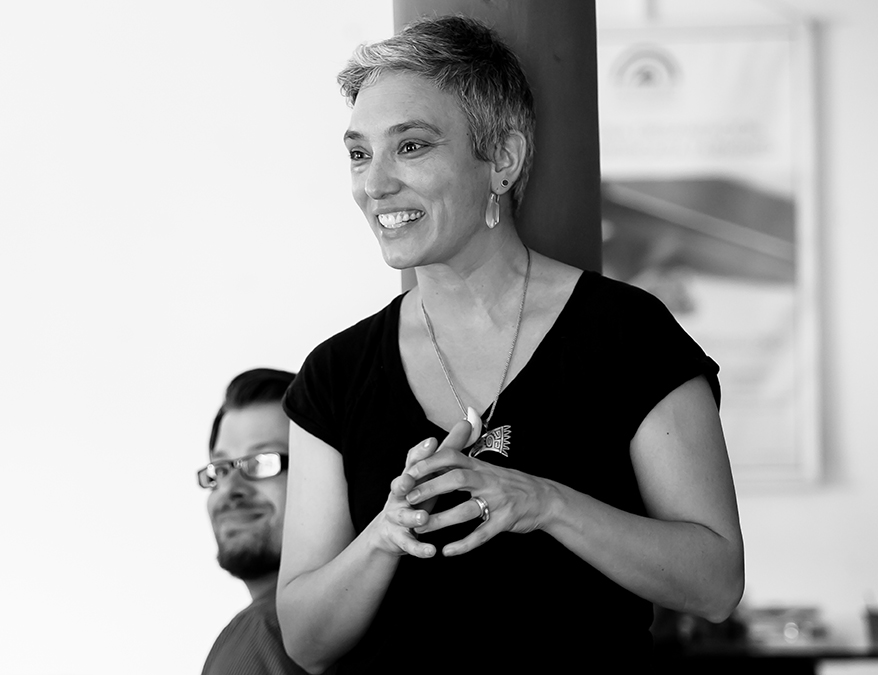
Christina Miller consults with small and medium-size businesses.
“If a retailer receives an answer (from a supplier) that is concerning, or, as may be the case, simply a series of ‘I don’t knows,’ then they have to be prepared to follow up,” she says. “Of course, if suppliers are not willing to be transparent, tough commercial decisions have to be made. That is the only way forward to protect the integrity of the supply chain.”
Younger customers care deeply about climate change, demand more from their shopping experiences and want to understand the story behind the product. Questions about responsible business practices will be inevitable, Van der Veken says.
RJC membership is now required of Plumb Club members. Michael Lerche, president of Goldstar Jewelry, past president of the Plumb Club and a board member of the Responsible Jewelry Council, says jewelers seeking transparency from their vendors can ask if they’re members of RJC, which requires third-party auditing and accountability.
“Our industry as a whole is very bad at looking long term,” Lerche says. “We have to change how everybody thinks. I know that’s a tall ask. It’s important because the customer thinks it’s important. The world is going that way.
Yes, the consumer isn’t quite there, but the world is catching up.”
Michael Goren, regional business director for Sarine Technologies in Europe, who is working on diamond sourcing technology, says Gen Z is demanding transparency in markets like Seattle, California and New York now, and soon will in other locations. “Part of what’s driving it is climate change and the environment, as well as the ability to understand that they can have more power to influence brands. They will start putting more pressure on retailers.” Addressing issues now, he says, can close the lag time between consumer pressure and the ability to deliver.
But retailers needn’t wait to follow their clients’ lead. As Christina Miller, founder of Ethical Metalsmiths, says, “It shouldn’t take a customer asking you for you to do the right thing. If you build it, they will come.”
A Retail
Perspective
John Green, president and CEO of Lux, Bond and Green, is one of only a few independent U.S. retail members of the RJC. Green has mentioned the affiliation on his website, but he isn’t shouting it from the rooftops. He’s not in it for the potential marketing cachet. “We joined RJC because its basic principles, from mine to market, align perfectly with part of our culture, which is having everything to do with making sure our people and our planet are protected,” Green says.

John Green of Lux, Bond and Green
It’s also not part of the sales presentation, he says. “I don’t think it would be understood, or it would be a long conversation and it could hurt the purchase. The customer could be thinking, ‘Are you here to sell me jewelry or to tell me that you’re a do-gooder?’” Green suggests using signage in the store to tell stories about affiliations that support responsible sourcing, or explaining it in a blog and answering questions as they arise.
Alisa Thorpe, a member of Ethical Metalsmiths, designs and sells custom and ethical jewelry in her business, Mercurius, based in Oakland, CA. Thorpe’s clients seek her out because they are interested in what she’s doing. Some ask about blood diamonds. Some ask about metals and mining.
“It’s challenging to talk about all of the issues without being a total downer,” Thorpe concedes. It’s a balancing act: “How do you let someone know they can do something really good without diving too deeply into the bad? How do you work human rights, income inequality and environmental devastation into a conversation about buying jewelry, a happy occasion? No jewelry retailer wants to have a conversation about what’s wrong in the world while someone is ready to buy a beautiful gift.”
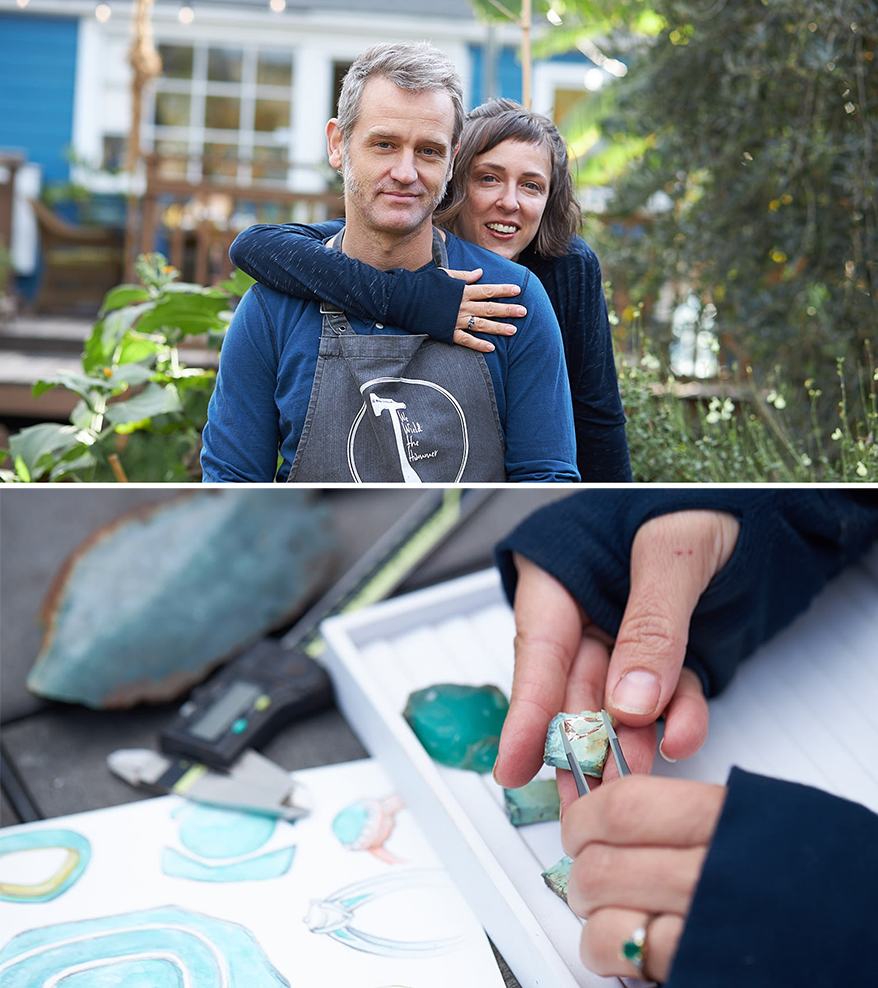
Alisa and David Thorp founded Mercurius in 2007.
She focuses on the positive, on programs that are doing good along the supply chain and includes that information on her website and on Instagram.
Woldenberg, who opened her Seattle store last year on Earth Day, says 85 percent of her clientele ask very specific questions about where her metals and gemstones come from. She melts and reuses customers’ gold for their new pieces and uses lab-grown diamonds from U.S. labs, post-consumer recycled diamonds and Montana sapphires. The store itself has high-efficiency heating and air conditioning, including radiant floors, LED lighting supplemented by natural light from well-insulated windows, and ventilation and filtration systems for indoor air quality. Displays are made from found materials. Woldenberg also helped write a self-assessment survey for Ethical Metalsmiths for new members to determine where they are on the responsibility scale and where there’s room for improvement.
Retailers Robert and Rose Marie Goodman, who own Robert Goodman Jewelers in Zionsville, IN, began exploring ethical options for their own business about eight years ago after they met Dawes at a jewelry show. Now the Goodmans expect designers whose work they sell to have either established a transparent business or be working toward it. They encourage traceable stones and fair-mined gold. They expect invoices to show details of sourcing.
The Goodmans don’t hesitate to talk about transparency with customers, and if they’re met with interest, they are happy to continue the conversation. On the other hand, if someone is not interested, “we don’t shove it down their throats,” Robert says. “We’re not authoritarians.”

Robert and Rose Marie Goodman began exploring ethical options for their retail business about eight years ago.
Goodman says the approach is heartfelt and not a marketing maneuver.
“We are publicly out there with who we are, not as a business model, but as a human model,” Goodman says. “When someone comes in because we are LGBTQ friendly, or because we support Black Lives Matter, transparency is part of that big story, a part of who we are and what we do. And from that perspective, we have seen an increase in people coming in the door every day. But if a retailer is doing it to drive traffic, first of all, they are doing it for the wrong reason. It’s a way of being. This isn’t a business strategy or a marketing strategy.”
Thorpe, too, is passionate about her goal to run an ethical jewelry business. “The environmental and human aspects of the issues are inseparable,” she says. “Is there an equitable distribution of the proceeds? Where do the source materials come from and where are they sold? What are we doing in our shop? How is the stuff packaged?”
Thorpe is working almost entirely with post-consumer recycled diamonds but would like to expand diamond sourcing when diamond industry suppliers can meet her standards of transparency and traceability.
“For colored gemstones, that is the area in which I can feel very positive and optimistic about programs that are traceable from mine to market. Ethical Gem Suppliers is at the forefront of ethical gems, not only in caring for the communities of miners but making sure that people are paid fairly, that more of the profit is kept in the mining source countries.”
ADVERTISEMENT
What’s Going
On With Gold?
When jewelry designer Toby Pomeroy came to the conclusion that gold mining, which almost always involves mercury, was arguably the most destructive environmental practice on earth, it changed his life. He decided he couldn’t continue to make jewelry unless he could find a way to encourage and support responsible mining. His first step was to approach Hoover & Strong, a company that agreed to provide him with only recycled gold.
Recycled gold, though, didn’t fix problems associated with mining. So Pomeroy founded Mercury Free Mining. The group is working with the Alliance for Responsible Mining to devise an alternative process that would also be cost effective and to identify miners who are on a path to sustainability. “Even within the industry, there are a large number of jewelers who do not know that mercury is part of the gold supply chain,” Pomeroy says. “Even fewer consumers do. But it’s an opportunity for us as an industry to begin to take responsibility for this. If consumers find out and we aren’t telling them about it, that will be worse. So why not say we are out to solve it and working in solidarity with 15 to 20 million artisanal gold miners in the world who have no alternatives available to them?”
Pomeroy has made inroads in awareness that he hopes will grow into an industry-wide movement. “It inspires our customers when we’re about something bigger than ourselves, something that involves the well-being of others and the planet. I’d love for the entire jewelry industry to say this is who we are. Let’s spread our wings and be supportive of those who have been supporting us and our lifestyle for centuries.”
Marc Choyt, owner of Reflective Jewelry in Santa Fe, the only certified Fairtrade Gold jeweler in the U.S. since 2015 and a self-described pioneer/activist since 2006, says while he’s seen exponential growth and interest in ethical business marketing recently, only a tiny fraction of the supply chain has changed.
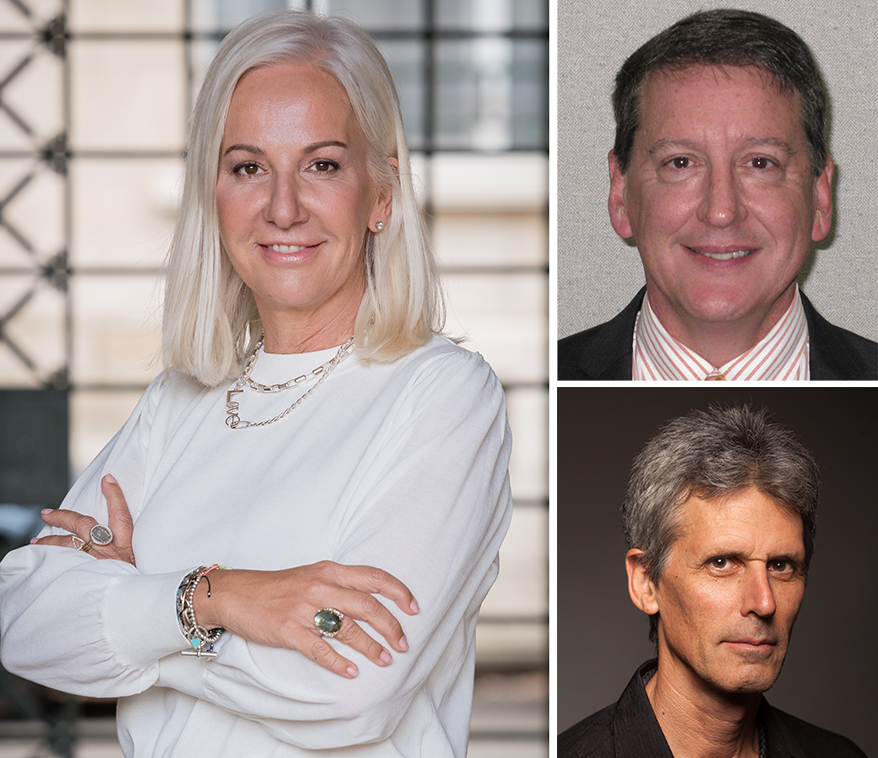
Iris Van der Veken, left, is the executive director of the Responsible Jewelry Council; Torry Hoover, above right, is president of Hoover & Strong; Marc Choyt owns Reflective Jewelry in Santa Fe.
“There’s a growing interest in gems that benefits small-scale producers with fair wages and environmental safeguards,” he says, “But over the past 19 years, of the 20 million small-scale gold miners whose lives are characterized by poverty and exploitation, fewer than 10,000 have benefitted from programs like Fairtrade/Fairmined,” he says.
He’s frustrated by the fact that recycled gold has become the sustainability standard, while importing responsibly mined gold from artisanal miners remains cost prohibitive. He considers recycled gold to be neutral at best. “I’m not trying to cast aspersions on people who want to do good things, but the current supply chain structures and powerful marketing narratives have been constructed in such a way that change that would help the producer communities is almost impossible,” he says. “If retailers want to make a difference, they can bring in fair trade gems or introduce Fairmined or Fairtrade Gold into their business, which can be particularly compelling in custom work.” His gold supply is weighed, tracked and audited, he files monthly reports, and does all of his fabrication in-house.
Miller, a consultant for businesses working toward ethical goals, agrees that finding ways for the industry to purchase more gold from artisanal and small-scale gold mines is a priority. “We support initiatives where miners and their communities are trying to do better in the areas of mercury and reforesting the land.”
Torry Hoover, president of Hoover & Strong, says the environment is a priority for the company, which was the first refiner to receive certification for using 100 percent recycled gold, branded as Harmony Gold. Acquiring gold from artisanal miners has been a struggle, since “many of the artisanal miners are one or two people with a shovel trying to find $5 a day to feed their families,” he says. The effort was also stymied by illegal activity among certain metals suppliers, who pleaded guilty in 2018 to failure to maintain an adequate anti-money-laundering program.
Output has been sporadic, and Fairmined gold comes at a premium of 10 percent. Retailers will have to promote the value attached to it to make it work in the marketplace, he says.
“We encourage other manufacturers to provide it as well,” Hoover says. “A high tide floats all boats.”

Gem Legacy distributes tool kits to miners.
Gem Legacy: Up
Close and Personal
Retailers can make an impact on mining communities by partnering with groups that support artisanal gemstone miners, such as the non-profit Gem Legacy.
“You’re already helping along the supply chain if you are just purchasing from artisanal gem-stone miners,” says Rachel Dery, director of communications and public relations. “Even without our help, gemstones are having a huge impact on the lives of those miners and those communities. We like to extend that impact.”
Dery suggests asking suppliers if they are giving back along their supply chain and what that looks like. That question alone should indicate if the vendor is familiar with the needs of their supply chain.
Or consider contributing a percentage of sales to an organization that supports the supply chain. Dery says she’s been happily overwhelmed by a 150 percent increase in donations each of the past two years, in part because Gem Legacy was able to share stories about how COVID was affecting the entire supply chain. “The trickle effect took a few months, but by May 2020, miners couldn’t sell anything they were mining,” she says. “We were able to do some relief efforts, food packages, non-perishables that would last a while: soap, water dispensers, along with masks and accurate information about the pandemic.”

Artisinal miners in Tanzania await supplies.
Dery estimates, conservatively, that Gem Legacy distributed 120,000 meals to mining communities in Tanzania. The industry responded enthusiastically when they realized they could make a huge impact toward supporting all of the families dependent on a mine for about $250.
Because Dery was delivering meals personally and talking with the miners, she learned that what they needed most were tool kits and mining equipment. Because in many cases artisanal miners were farmers before they found gems, they’re still often using farming tools for mining, which is both unsafe and ineffective. To meet that need, Gem Legacy assembled 338 tool kits with an average cost of $125 each.
“The response was incredible,” she says. “Miners felt seen and that their work was valued.”
The Natural Diamond
Council Outreach
The Natural Diamond Council, too, has partnered with the RJC to remind retailers of and to help educate consumers and sales associates about how diamond mining has socio-economic benefits around the world. The NDC sent a box of marketing materials to more than 4,000 U.S. independent jewelry retailers that included brochures they could share with their customers. The campaign is called “Thank you, by the way.”
Highlighted topics include protecting wild animals and saving species from extinction, providing access to education for children, funding more than 400 women-owned businesses, and health care for 4 million people. “The goal is to get these sales professionals educated, so if a consumer is asking them why should I buy a natural diamond, they can share the wonderful things the natural diamond community has done around the world,” says Gabrielle Grazi, vice president, retail strategy and partnerships for the Natural Diamond Council. “We’ve got to get this into the front-line associate’s hands. That’s where it’s really going to make a difference.”
Natural Diamonds
and Origin Stories
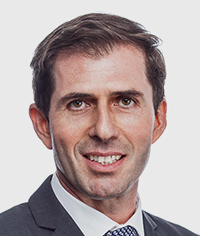
Michael Goren of Sarine Technology
Diamond cutter Maarten DeWitt is partnering with Sierra Leone native Fas Lebbie and Mickey Brookshire to purchase and cut diamonds in Sierra Leone that will be traceable from mine to market in a company called Root Diamonds. They also are raising funds to develop diamond cutting workshops in areas of Sierra Leone that are close to artisanal mines.
“The Fairtrade thing is something people need to take seriously,” DeWitt says. “We’ve seen it grow from a handful of people talking about it to becoming a way to do business. My whole focus was building my own personal brand by using recycled diamonds. But Fairtrade retailers are interested in affecting the future. Buying recycled diamonds doesn’t do anything to improve the lives of miners. I was well intentioned, but off track.”
Sarine Technology, which has developed a method of tracing diamonds from country of origin to market, has already implemented the program in Europe and Asia and is now launching it in U.S. markets. Michael Goren says the technology will be more reliable than certifications or audits. Using the same Sarine equipment currently used by diamond producers and manufacturers to assess a diamond’s value, it’s possible to produce a birth ID for a rough diamond, upload it to the Cloud, and then verify its identity throughout its supply chain journey. Origin information includes country of origin and producer, but it could be adapted to be more specific. Retailers can also choose a “white-label solution” to add additional content about the “unique journey of the diamond,” or a replica of the rough diamond can be included in the package. Consumers will use the information to learn if and how the purchase of their diamond will benefit mining communities and to ensure their purchase will not be sourced from problematic locations. “They can sleep at night knowing they bought something for a happy occasion that’s not supporting something bad in another part of the world,” Goren says.
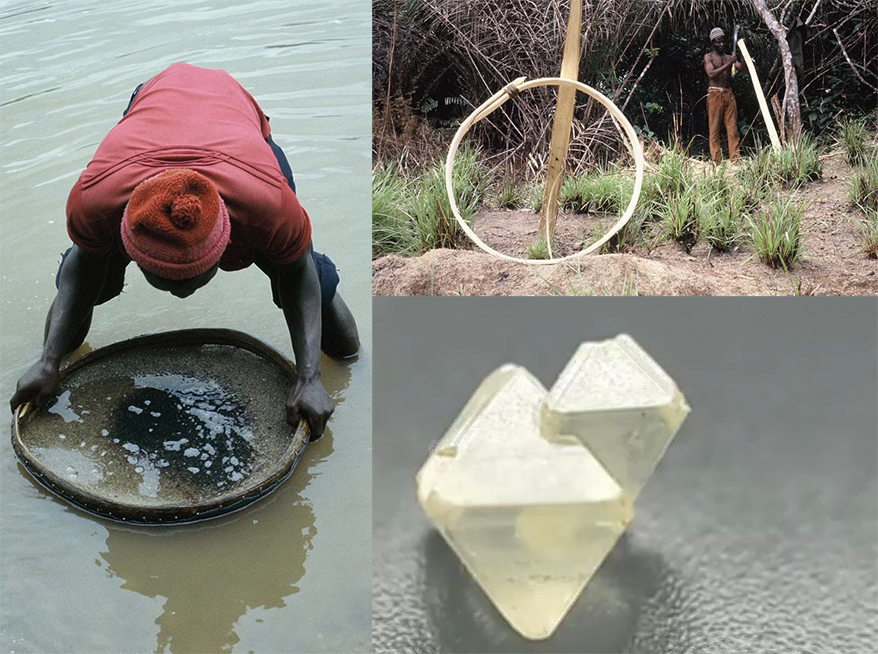
Maarten DeWitt is working with partners in Sierra Leone on a project called Root Diamonds. One of the goals is to establish a diamond-cutting school in the country. Another is to sell diamonds with a clear origin story.
While initially adopted by luxury brands in Europe, the service will be available to any size company. “This solution could be available to a single store in New Hampshire or Arkansas, and that store can brand it if they want to,” Goren says. “It can provide sustainability and ethical confirmation of sources to your consumer without being too complex. And in most cases, they won’t need to change their supply chain. We can work with suppliers to make it happen.”
In another development around transparent diamond sourcing, 28 U.S. retailers are currently working with SCS Global Services and Source Certain International to confirm the origin of a diamond using forensic technology that can identify a specific mine shaft or specific equipment at a lab-grown diamond facility. Every facility in the supply chain is also audited for compliance with 12 core environmental, social and governance principles. “In addition to traceability, one of the things that sets our standard apart is that it holds producers accountable for all of their climate impacts,” says Karen Righthand, vice president for corporate sales and marketing. “This is redefining what sustainability means.”
